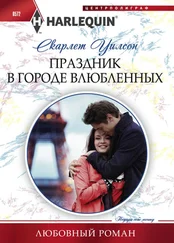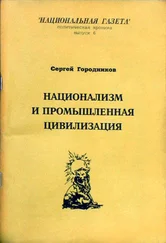Anne Goldgar, Tulipmania: money, honour, and knowledge in the Dutch Golden Age (Chicago, 2007), p. 10.
William Temple, The Works of Sir William Temple, 2 vols. (London, 1731), Vol. II, p. 60.
The Philosophical Writings of Descartes: volume III, the correspondence, trans. John Cottingham, Robert Stoothoff, Dugald Murdoch and Anthony Kenny (Cambridge, 1991), p. 32.
Joseph de la Vega, Confusion de Confusiones (Boston, MA, 1957), p. 21.
Ibid., p. 11.
Ibid., p. 28.
R. E. Kistemaker, ‘The Public and the Private: public space in sixteenth- and seventeenth-century Amsterdam’, in Arthur K. Wheelock Jr and Adele Seeff, The Public and Private in Dutch Culture of the Golden Age (Newark, 2000), p. 22.
Ibid., p. 21.
The Travels of Peter Mundy, in Europe and Asia, 1608–1667, ed. Sir Richard Carnac (Temple, 1914), Vol. IV, pp. 70–1.
Simon Schama, The Embarrassment of Riches: an interpretation of Dutch culture in the Golden Age (Berkeley, CA, 1987).
Bryant Simon, ‘Consuming Third Place: Starbucks and the illusion of public space’, in Miles Orvell and Jeffrey L. Meikle (eds.), Public Space and the Ideology of Place in American Culture (Amsterdam, 2009), pp. 243ff; Howard Schultz and Dori Jones, Pour Your Heart into It: how Starbucks built a company one cup at a time (NY, 1997), p. 5.
Jee Eun Regina Song, ‘The Soybean Paste Girl: the cultural and gender politics of coffee consumption on contemporary South Korea’, Journal of Korean Studies , 19:2 (Fall 2014), 429–48.
Seyed Hossein Iradj Moeini, Mehran Arefian, Bahador Kashani and Golnar Abbasi, Urban Culture in Tehran: urban processes in unofficial cultural spaces (e-book, 2018), pp. 26ff.
W. Scott Haine, ‘“Café Friend”: friendship and fraternity in Parisian working-class cafés, 1850–1914’, Journal of Contemporary History, 27:4 (October 1992), pp. 607–26; W. Scott Haine, The World of the Paris Café: sociability among the French working class, 1789–1914 (Baltimore, 1998), p. 1, 9; Barbara Stern Shapiro and Anne E. Havinga, Pleasures of Paris: from Daumier to Picasso (Boston, MA, 1991), p. 123.
John Rewald, History of Impressionism (NY, 1946), p. 146.
Rowley Amato, ‘Brokers Are Now Opening their own Coffee Shops in Harlem’, Curbed New York, 16/8/2014, https://ny.curbed.com/2014/8/16/10059746/brokers-are-now-opening-their-own-coffee-shops-in-harlem.
Markman Ellis, The Coffee-House: a cultural history (London, 2004), pp. 7–8.
Ibid., pp. 29–32; U. Kömecoglu, ‘The Publicness and Sociabilities in the Ottoman Coffee house’, The Public, 12:2 (2005), 5–22; A. Caksu, ‘Janissary Coffee houses in Late Eighteenth-Century Istanbul’, in Dana Sajdi (ed.), Ottoman Tulips, Ottoman Coffee: leisure and lifestyle in the eighteenth century (London, 2007), p. 117.
Ellis, pp. 32–3.
Ibid., p. 42; Steve Pincus, ‘“Coffee Politicians Does Create”: coffee houses and Restoration political culture’, Journal of Modern History 67:4 (December 1995), 811–12.
C. John Sommerville, The News Revolution in England: cultural dynamics of daily information (NY, 1996), p. 77.
Pincus, 814–15.
Ibid., 824.
Ellis, pp. 157–8; Larry Stewart, ‘Other Centres of Calculation, or, where the Royal Society didn’t count: commerce, coffee-houses and natural philosophy in early modern London’, British Journal for the History of Science , 32:2 (June 1999), 133–53.
Stewart, 133–53.
Pincus, 833.
Paul Slack, ‘Material Progress and the Challenge of Affluence in Seventeenth Century England’, Economic History Review, n/s, 62:3 (August 2009), 576–603; Ian Warren, ‘The English Landed Elite and the Social Environment of London c.1580–1700: the cradle of an aristocratic culture?’, English Historical Review, 126:518 (February 2011), 44–74.
Farid Azfar, ‘Beastly Sodomites and the Shameless Urban Frontier’, The Eighteenth Century, 55:4 (Winter 2014), 402.
Anon, A Trip Through the Town: containing observations on the customs and manners of the age (London, 1735), p. 1.
R. H. Sweet, ‘Topographies of Politeness’, Transactions of the Royal Historical Society, 12 (2002), 356.
Ibid., 355–74; Lawrence E. Klein, ‘Coffee house Civility, 1660–1714: an aspect of post-courtly culture in England’, Huntington Library Quarterly, 59:1 (1996), 30–51; Lawrence E. Klein, ‘Liberty, Manners, and Politeness in Early Eighteenth-Century England’, The Historical Journal, 32:3 (September 1989), 583–605;.
Markku Peltonen, ‘Politeness and Whiggism, 1688–1732’, The Historical Journal, 48:2 (June 2005), 396–7.
Peter Borsay, ‘Culture, Status, and the English Urban Landscape’, History, 67:219 (1982), 12; Lawrence E. Klein, ‘Politeness and the Interpretation of the British Eighteenth Century’, The Historical Journal, 45:4 (December 2002), 886ff; Warren, 49ff.
Смысл существования ( фр .).
‘A Letter from a Foreigner to his Friend in Paris’, The Gentleman’s Magazine, 12, August 1742.
Jerry White, London in the Eighteenth Century: a great and monstrous thing (London, 2012), p. 322f.
Ben Wilson, Decency and Disorder: the age of cant (London, 2007), p. 17.
Англ . «пробирный камень», «оселок», «критерий», «мерило», перевод зависит от содержания книги.
Darryl P. Domingo, ‘Unbending the Mind: or, commercialized leisure and the rhetoric of eighteenth-century diversion’, Eighteenth-Century Studies, 45:2 (Winter 2012), 219.
White, p. 130.
Paul Langford, ‘The Uses of Eighteenth-Century Politeness’, Transactions of the Royal Historical Society, 12 (2002), 330.
[Robert Southey], Letters from England: by Don Manuel Alvarez Espriella, 2 vols. (New York, 1808), Vol. I, p. 39; Helen Berry, ‘Polite Consumption: shopping in eighteenth-century England’, Transactions of the Royal Historical Society, 12 (2002), 375–94.
Ford Madox Ford, Provence: from minstrels to the machine , ed. John Coyle (Manchester, 2009), p. 24.
Ellis, pp. 205–6.
Ibid., pp. 177–80, 212–14.
The Life and Opinions of General Sir Charles James Napier, 4 vols. (London, 1857), Vol. II, p. 57.
Читать дальше
Конец ознакомительного отрывка
Купить книгу











